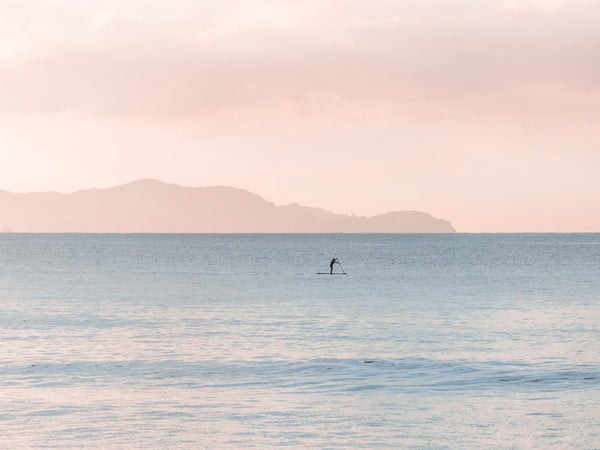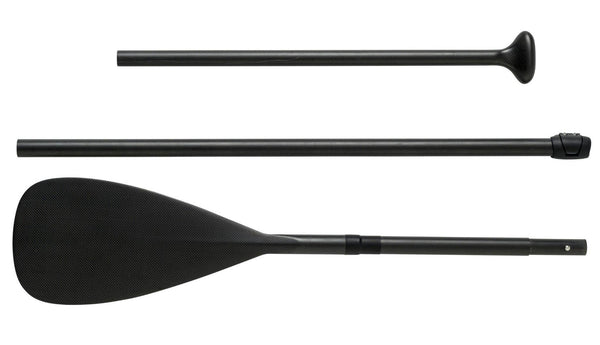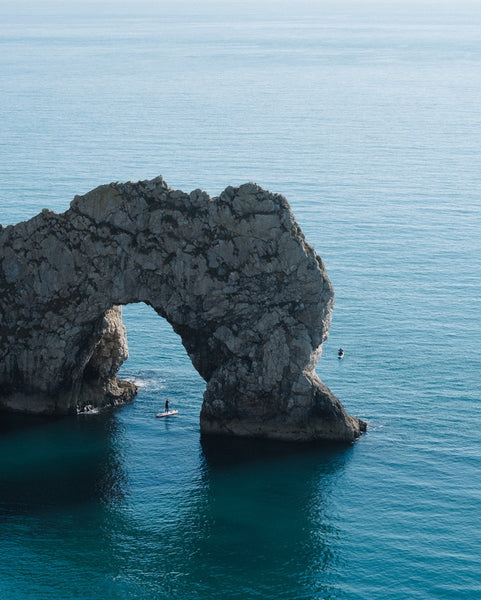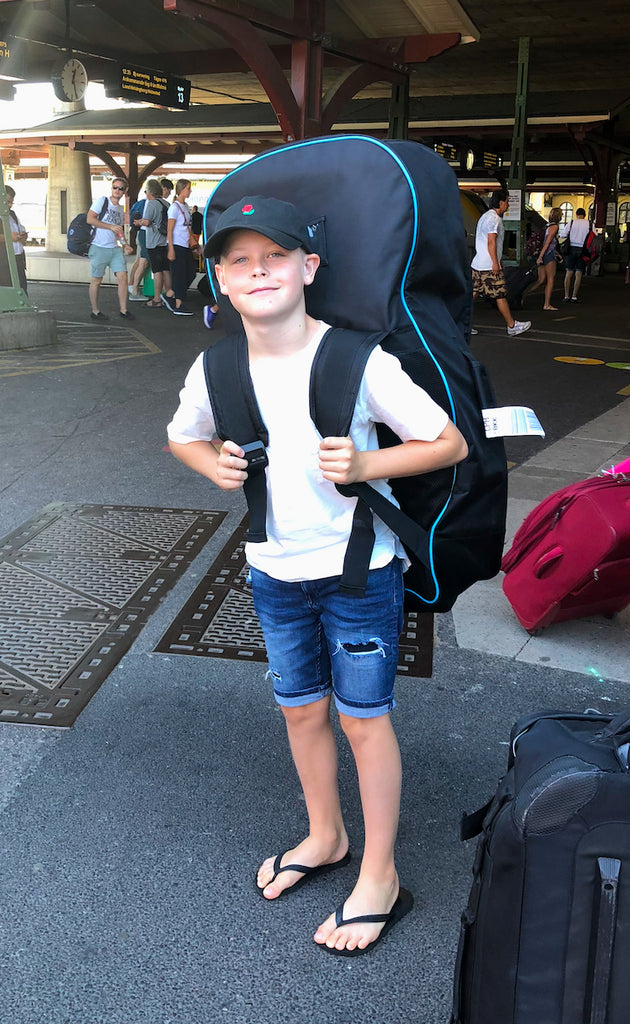Stand Up Paddle Boarding: The Beginners Guide
Dec 07, 2018
Everyone is doing it these days. The ever increasing in popularity sport, Stand Up Paddle Boarding. Once you try it, you'll be hooked. But how do you go about getting into it? There's SUP (Stand Up Paddle for short) schools popping up everywhere, which is great if you want to have a lesson or two. But how do you move past the point of just renting a board? What size do you need? Inflatable or hard board? Look no further as we can answer all of your questions right here...

1. Buying Your Own Board
A few years ago, people were against the idea of owning their own SUP Board, for two reasons. How do you store something so big? And aren't they insanely expensive? Not anymore.
With technology ever changing, inflatable Stand Up Paddle Boards has now caught up to their older brother, the traditional hard board (Click here for more info on Inflatable SUP's). They are sturdy, great for people for limited space and are great all round boards for beginners and intermediate paddlers. Have a look through our range of inflatable boards and you will notice that the prices are not bank breaking like the general market was about five years ago.
When it comes to buying your own, an all round board is perfect for learning and advancing.
Check out our 10'6 Explore Paddle board. Our most popular, best selling inflatable SUP combines excellent stability and effortless glide on the water. This all-rounder board is designed for all skill levels from beginner to your seasoned paddlers. It unpacks & inflates in minutes so you can hit the water and go explore!
2. Invest In a Leash
It's every paddle boarder's lifeline, using a leash can mean added safety for yourself and for others on the water. The last thing you want to do is be swimming off after your board that's come out from under you. Sometimes the conditions you are out in can change, the current can differ very quickly and you will be thankful of your leash as it stops your board from drifting away from you. Also, the last thing you really want to be doing on a nice relaxing paddle is apologising to a random person for your board shooting out from you and hitting them. There are different types of leashes for different styles of paddling, but as a beginner just invest in a standard coil paddle board leash as you are learning. Coil leashes are better as they don't drag in the water like a regular surfing leg rope would.
3. Paddles
Coming in a variety of styles and designs, buying a paddle might take a little research. Firstly, the constructions can vary, using materials such as plastic, aluminium, wood and carbon fibre. Finding a paddle that fits your budget and your style of riding can be a big factor. If you struggle with storage space or are looking at getting an inflatable stand up paddle board then a three piece paddle is something to consider. The paddle breaks down into three pieces, making packing for trips that involve getting on a plane, super easy as your board, pump and paddle can all fit in one convenient bag.

Paddles also come with a variety of handles, blades and adjustable lengths. The general rule is that the paddle used with your paddle board should always be 6 to 10 inches above the height of the paddler. Your paddle size will vary from use in flat water and use in the surf. Your paddle should be on the longer side for flat water use and the shorter side for use in the surf. The blade has usually been designed bent at a slight angle to the shaft which allows for more forward reach when taking a stroke in the water. Oh, and make sure you have your paddle round the right way when out on the water.
4. Bags
A bag for your board is a lot more important than you think. It adds protection during transport and storage, against damages that could be out of your control. Most inflatable Stand Up Paddle Boards come with their own carry case which is a backpack style with enough space to fit your board (deflated) pump, paddle and extras. This is perfect for storing your board when you are not using it...just make sure the salt water has been washed off as it can cause the fabric to breakdown and rot away.

The whole kit you see above, including the board itself, fits inside that backpack! WIth padded shoulder straps, it's easy to carry and comfortable too.
If you are looking at investing in a traditional hard board and plan on doing a fair bit of travelling, then a board bag will be essential. Most people do say that most accidents happen out of the water, so it's better to protect your new favourite toy.
5. Life Jacket
We see a lot of people not wearing them out on the water, but a life jacket (or PFD) can save your life. If you plan on paddling on open, deep water, then we suggest always wearing one. Stand Up Paddle Boarding is a great way to get fit, it's a great work out and that means it can be tiring. The last situation you want to find yourself in is struggling to stay afloat because you have no energy left. You might consider yourself a great swimmer but when you are out on open water there are a number of factors that are different than your local swimming pool. Having a life jacket will also take the edge off and make you feel more relaxed and comfortable when out paddling. Safety is key when it comes to paddling.

6.Transporting It All
You've read our blog posts, you've taken in the information we have given you and you've gone out and bought your kit. So, how do you get it from your pad to the beach or river? If you've gone for a traditional hard SUP board and you've thrown it in a board bag, then the best way to transport it is on the roof of your car or van whilst making sure it is securely strapped down. You don't want to look out your rear view mirror and see your ten something foot board flying off down the road. Sturdy roof rack and straps are ideal for transporting larger boards such as SUP's.

It's a lot easier with an inflatable board, it will fit in the boot or back seat. Don't travel with a fully inflated board... it will only end in disaster. inflatable SUP’s are really convenient for transporting to and from the water as well as for travel. Just deflate it, roll it into its bag and throw it in the back of your car or check it on a bus… it couldn't be easier. Then getting your board down to the water is made hassle free as pretty much every board has a padded handle in the centre for carrying. Once you hit the water you are good to go!
Once you have got to grips with the basics then the world of SUP will open up to you. Whether it's SUP Yoga, SUP racing or just paddle with friends, there's so much fun to have out on the water.
Now you've read all about SUPs, why not look at getting one? Click here to view our range of inflatable SUP board packages.


